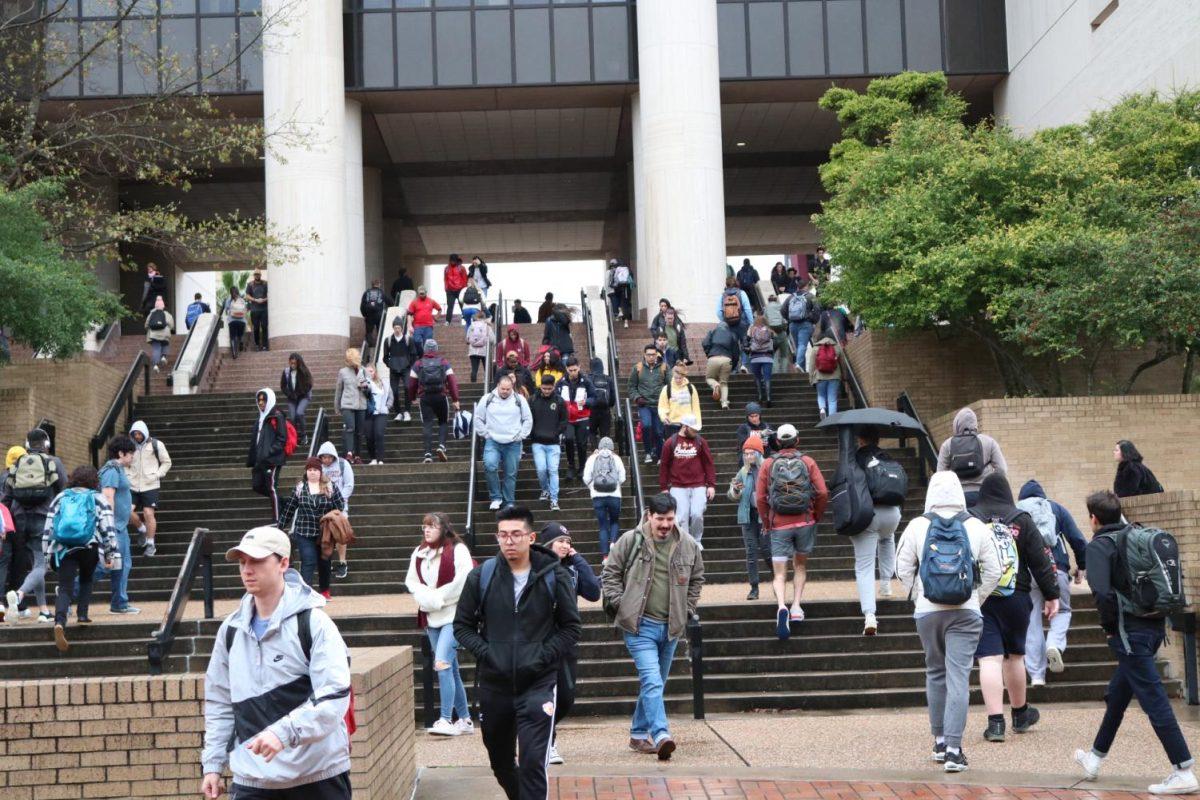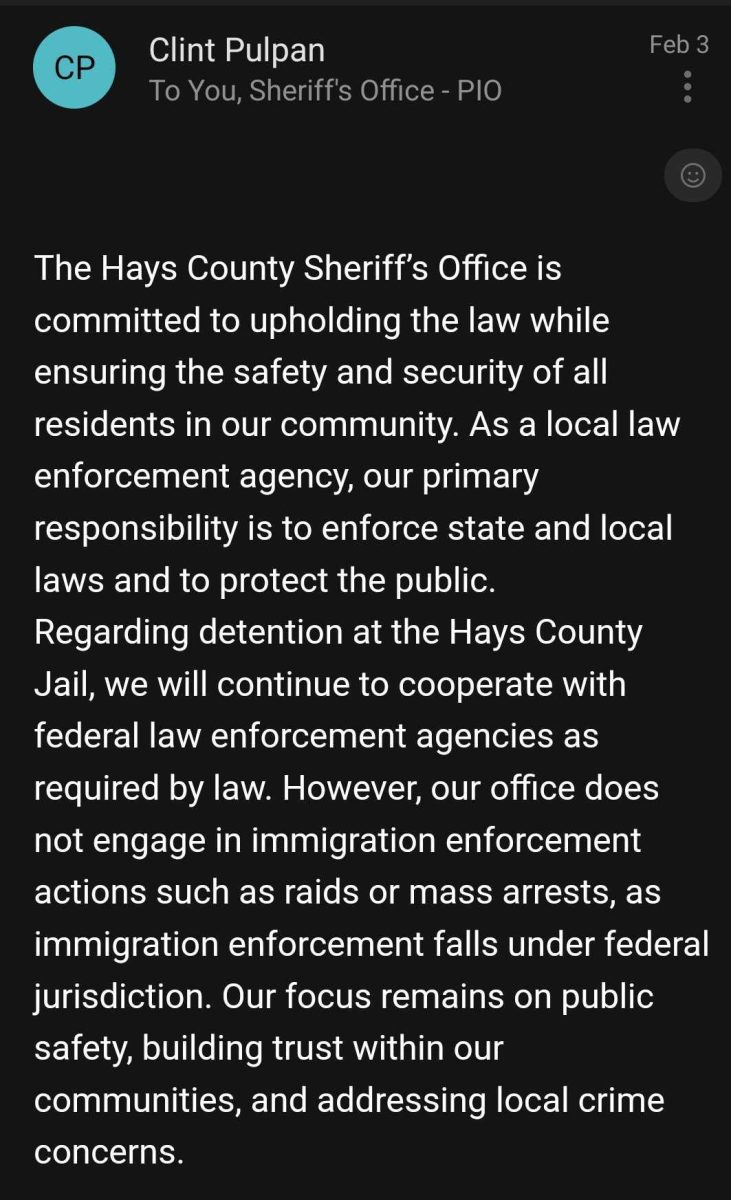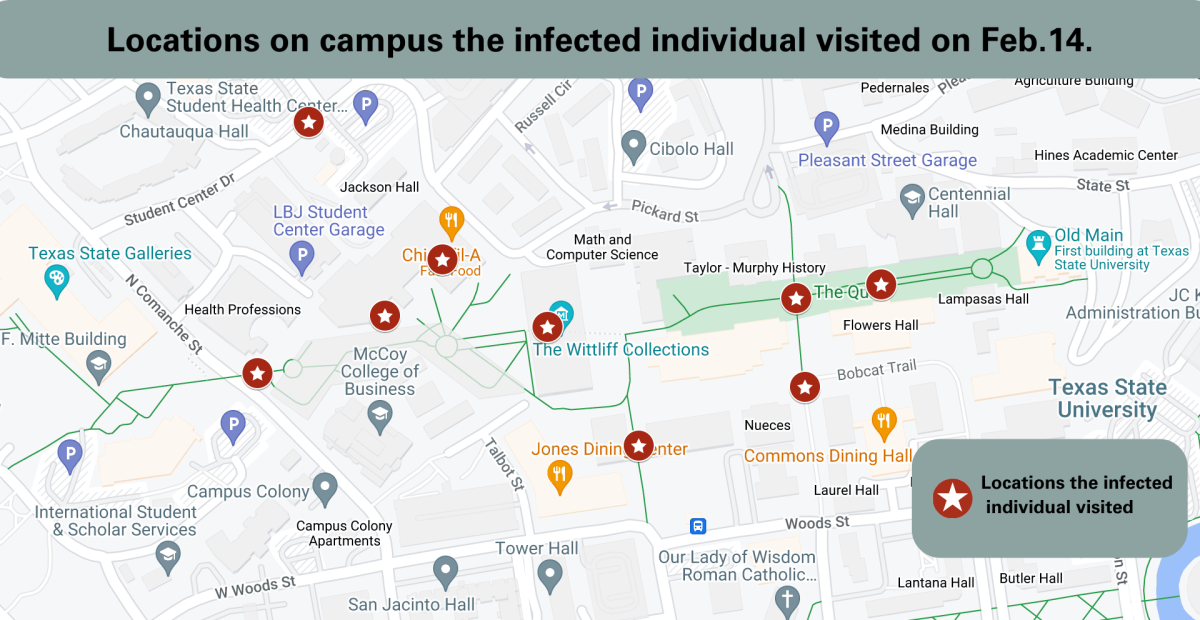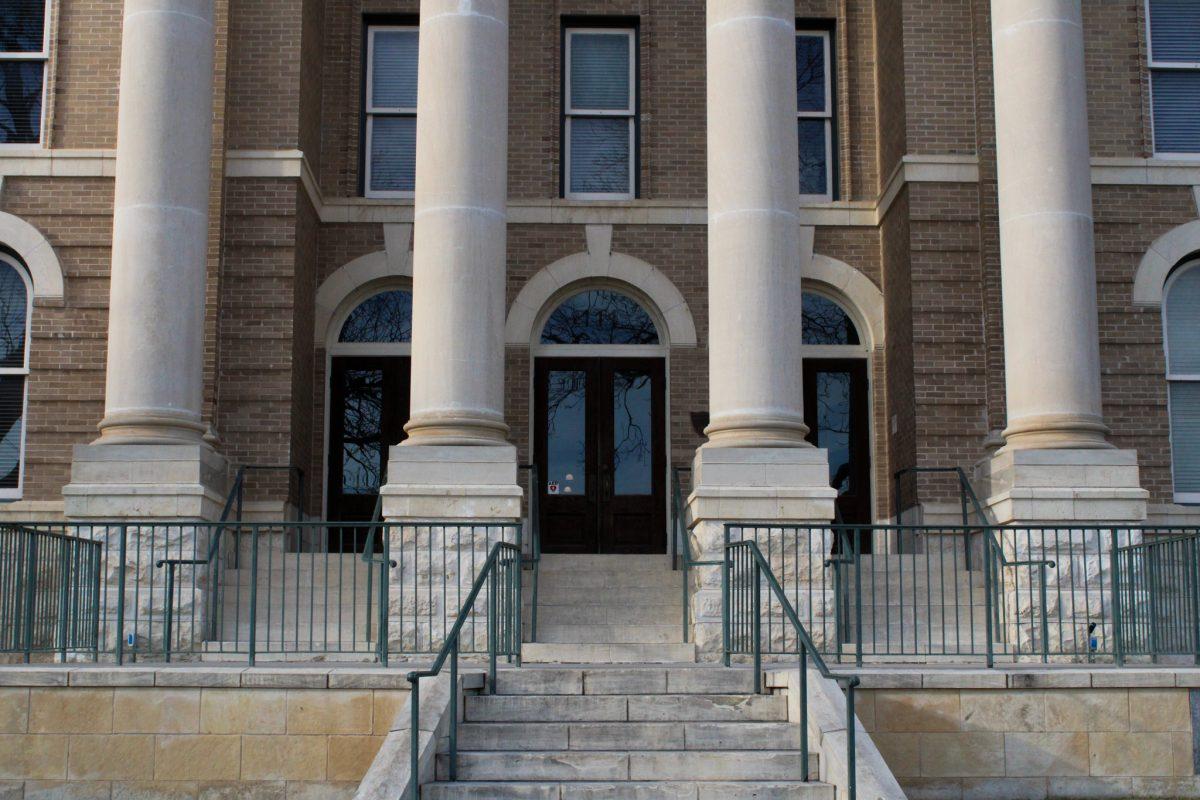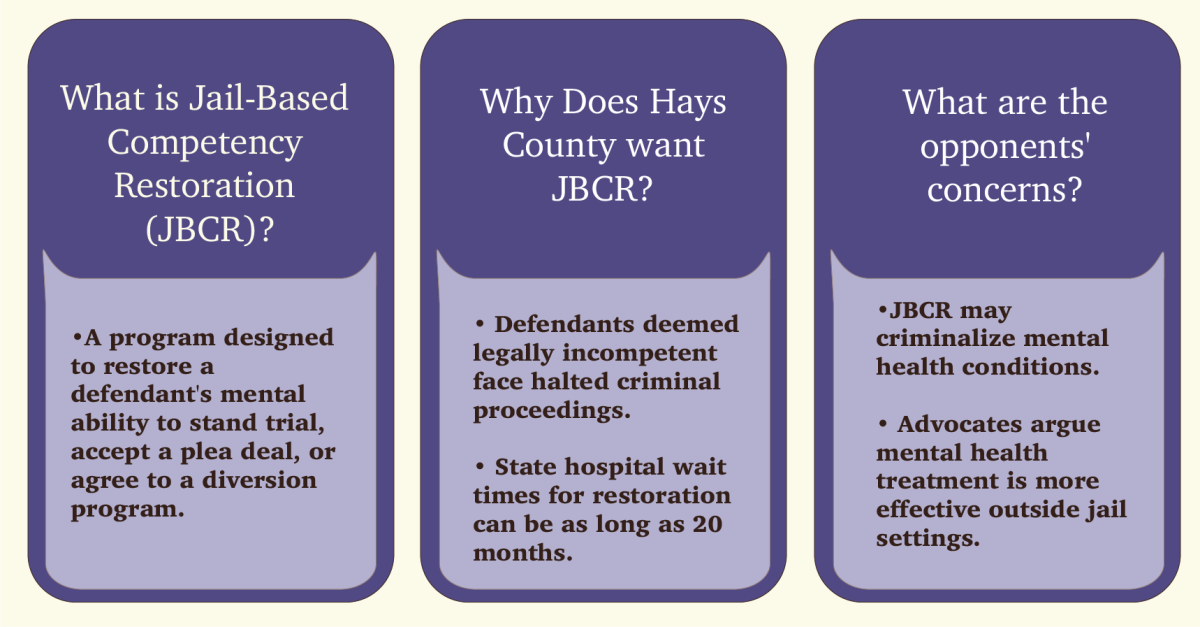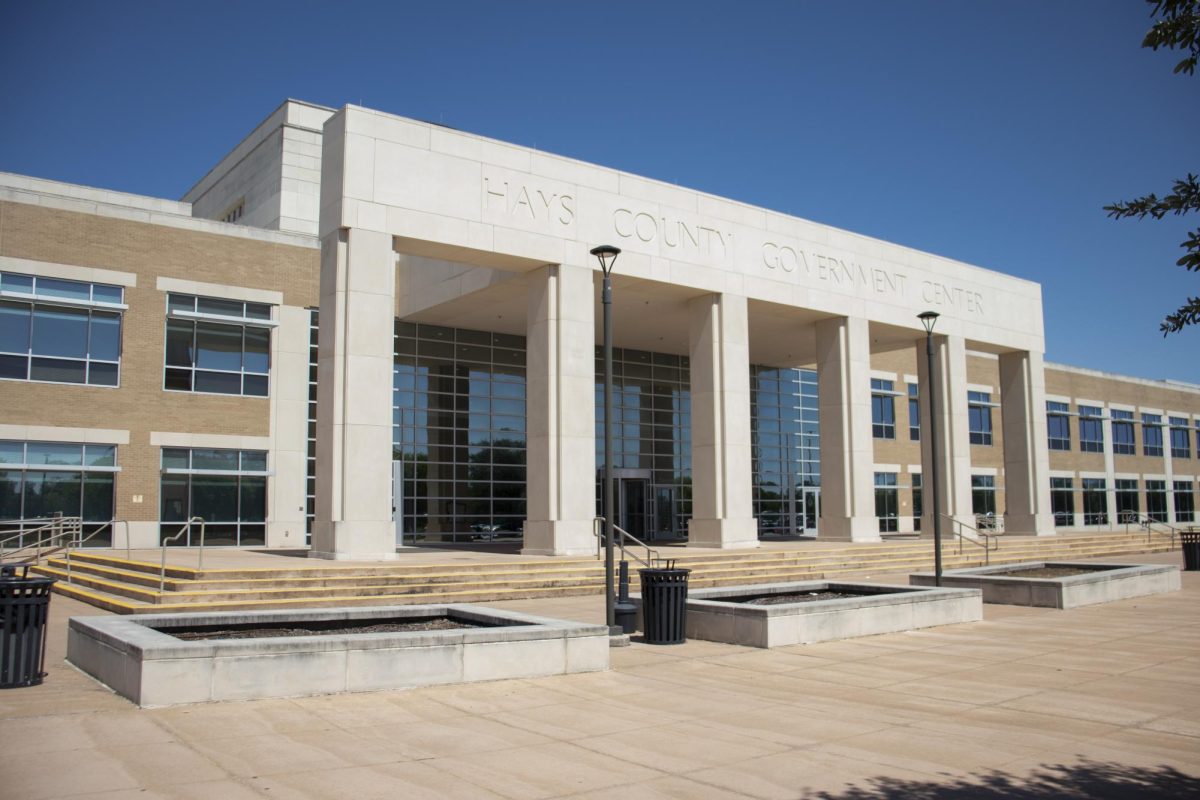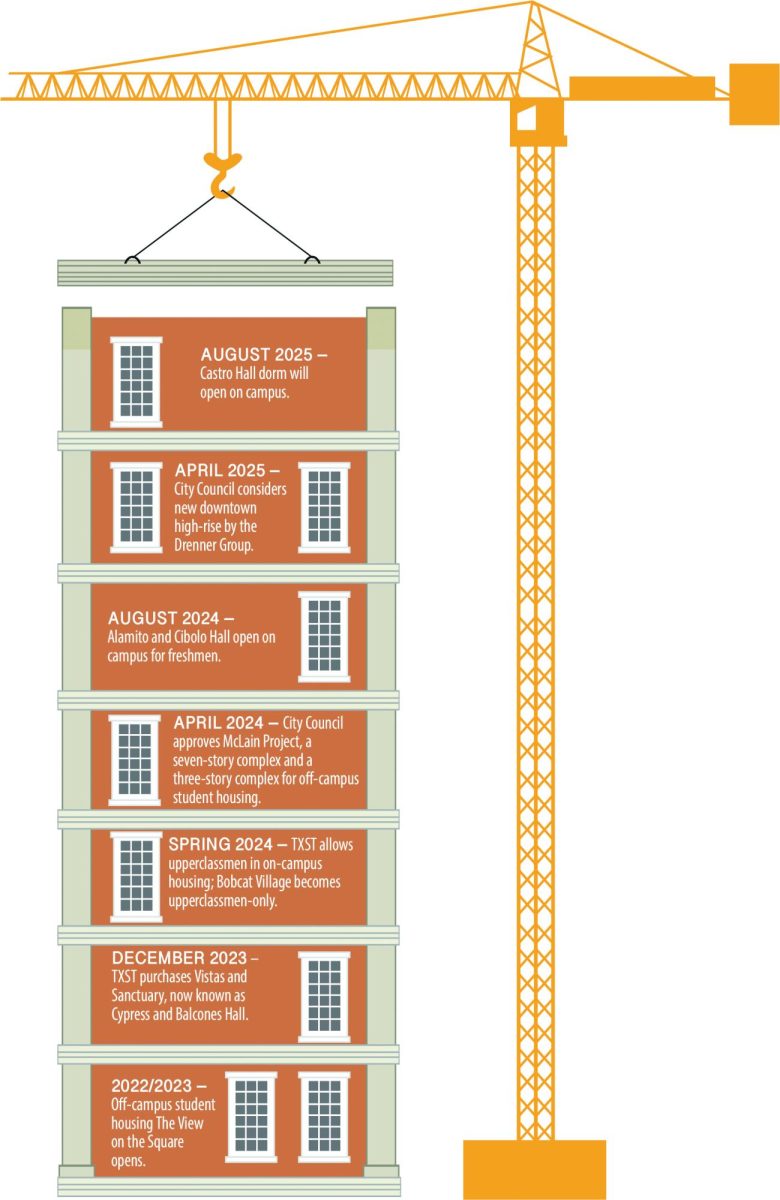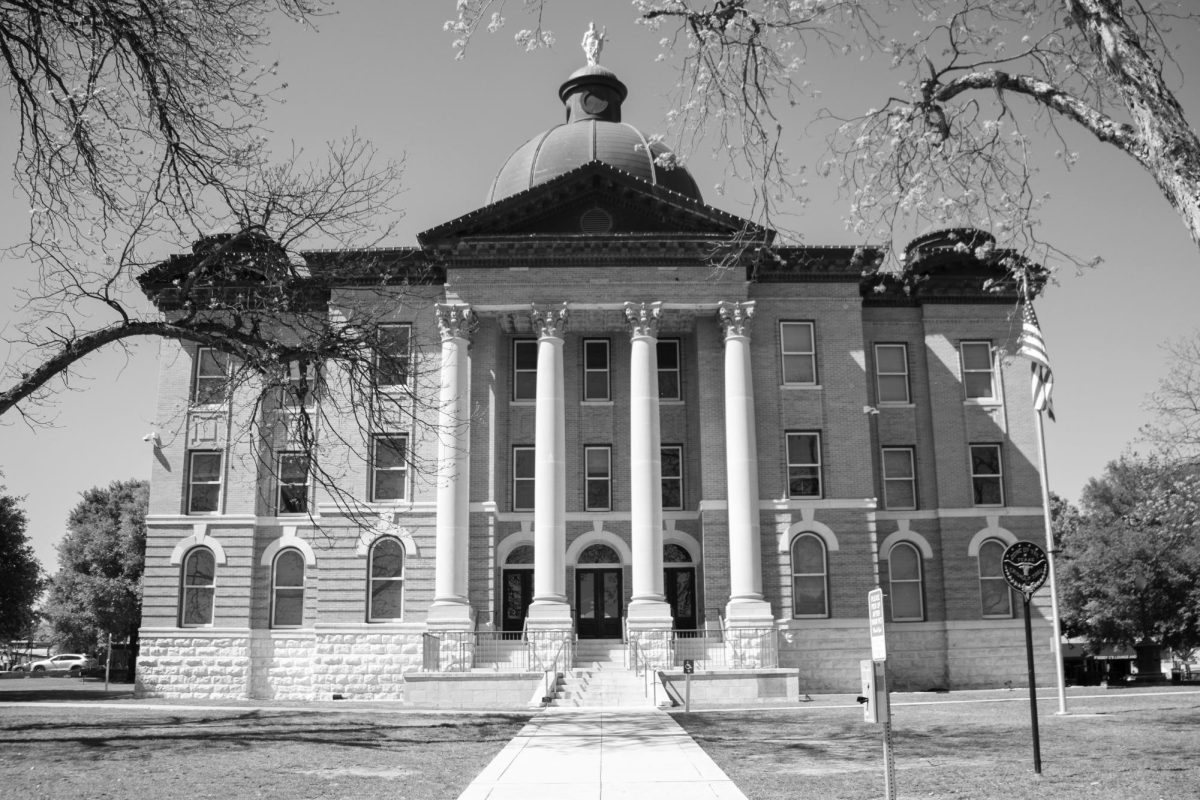Invitations to participate in the 24th U.S. Census will be delivered to households March 12-20, and Hays County is urging residents—including students—to respond.
The census is a historical convention that occurs every 10 years and is mandated by the U.S. Constitution in Article 1, Section 2. The census is a basic headcount of every resident in the U.S. The data gathered is used by the federal government to determine how resources should be divided among the states and cities.
The census count determines how many congressional seats are divided between the states. Seats in the House of Representatives are assigned or removed based on a state’s population data from the past decade.
Texas has consecutively gained seats in the House of Representatives for the past seven decades, gaining two seats in 2000 and four seats during the last nation-wide census in 2010. The state is set to add more seats to its 36-member delegation according to population estimates by the U.S. Census Bureau in 2019.
Texas’ tendency to add congressional seats during times of the census shows a continued pattern of populations moving from northern to southern states according to data presented by the Bureau.
The census data is also used to determine how $675 billion in federal funds will be distributed among all 50 states, the District of Columbia and five U.S. territories (Puerto Rico, American Samoa, the Commonwealth of the Northern Mariana Islands, Guam and the U.S. Virgin Islands).
Hays County Judge Ruben Becerra said a complete count is necessary for the county to receive adequate federal funding.
“A complete count of our residents – which includes homeowners, renters, undocumented residents, students and the homeless – is critical in ensuring that Hays County gets its fair share of the $675 billion the federal government sends out for major infrastructure projects, healthcare, education and more,” Becerra said.
Texas has received more than $59 billion in federal funds annually since the 2010 census. The Counting for Dollars 2020 Project, a recent study by the George Washington Institute of Public Policy, estimates the distribution of federal dollars based on census data. An undercount of just 1% of Texas’ 29 million population would cost the state at least $300 million annually for a decade.
Becerra said Hays County created a new Complete Count Committee, or CCC, Jan. 28 to ensure all residents living in the area are counted in the upcoming U.S. Census.
“We formed the Hays County CCC to assist in the thorough identification, education and representation of our diverse and underrepresented population in the 2020 census, and we’ll be working in partnership with all other CCCs in the county and in neighboring counties,” Becerra said. “Our task is to encourage our residents to participate in the census and educate them on the methods they can use to answer the census survey.”
The committee, formed fall 2019, will work closely with the new Census Coordinator Jessica Mejia. Hays County’s CCC is seeking to gather data that accurately represents Hays County’s growing population.
Anita Collins, executive assistant to Judge Becerra, said the Hays County CCC created task forces to encourage the county to spread the word.
“Our CCC includes representatives from throughout the county and has already set up task forces to encourage participation from nonprofits, businesses, the education community and others to help get the right information to our residents,” Collins said.
The U.S. Census Bureau estimates approximately 25-30% of Hays County’s 2018 population live in “hard-to-count” neighborhoods such as rural areas, student housing, areas populated by renters and non-English speaking residents, as well as the homeless population.
University students are among the hardest groups to account for in the U.S. Census according to the Bureau, as students may be confused about whether they should be counted as part of their previous household. The Bureau states where a citizen resides as of April 1, 2020, indicates where they should be counted.
The Bureau will send out census takers April 1 to gather data from people living in group quarters such as university student housing, assisted living centers and correctional facilities. These census takers will also make home visits to those who may have not answered the questionnaire by April or to ensure accuracy in the census data.
There will continue to be no citizenship question on the census, as the Supreme Court ruled it unconstitutional June 2019.
Hays County has set aside $50,000 for Census-related needs, and United Way has awarded the county an $8,000 grant for “Get out the Count” push. Travis County also administered a $59,000 grant for a media campaign to promote census participation in Bastrop, Caldwell, Hays, Travis and Williamson counties.
Some of the programs that rely on a complete count of the population include the Federal Pell Grant, Highway Planning & Construction, CDBG Disaster Recover Grants, Historic Preservation Fund, Small Business Development Grants, Emergency Food Assistance Program, Assistance to Firefighters Grant and Violence Against Women Grants.
For more information on the U.S. 2020 Census, visit its website.
Categories:
2020 Census: What, when, how and why
February 25, 2020
Texas State students travel through the Alkek walkway Thursday, Feb. 20, 2020. University students are one of the most difficult groups to attain accurate information according to the U.S. Census Bureau.
0
Donate to The University Star
Your donation will support the student journalists of Texas State University. Your contribution will allow us to purchase equipment and cover our annual website hosting costs.
More to Discover



